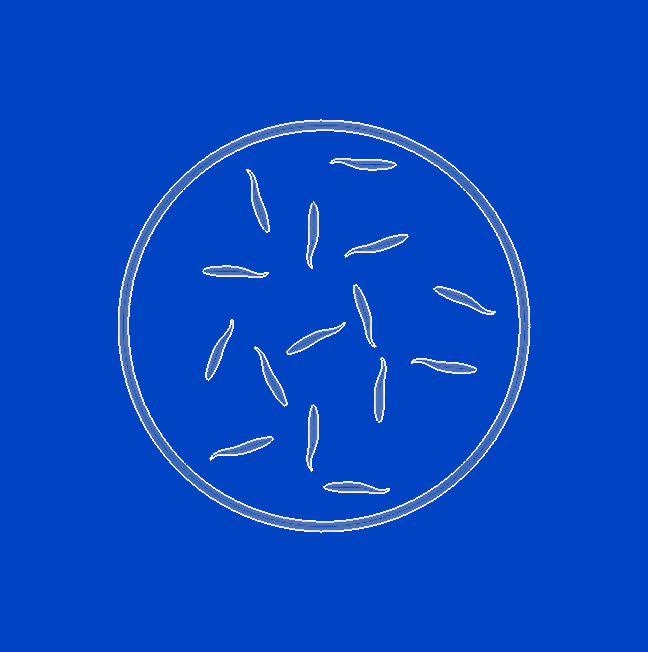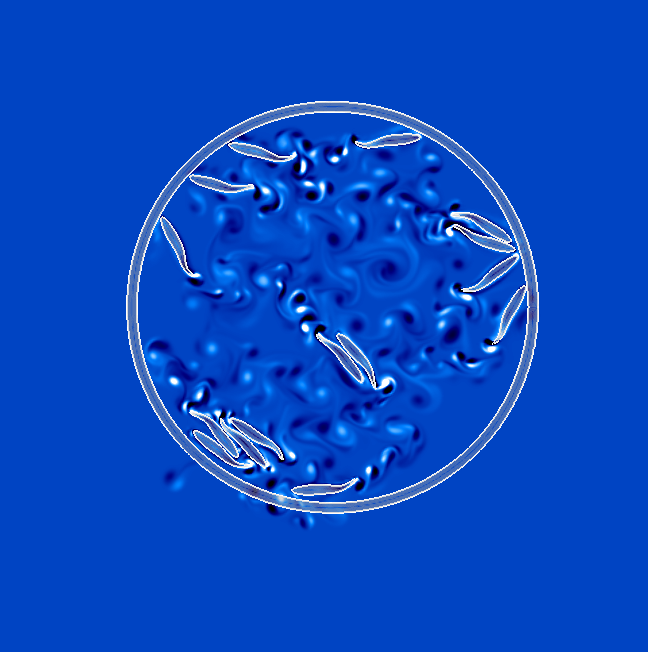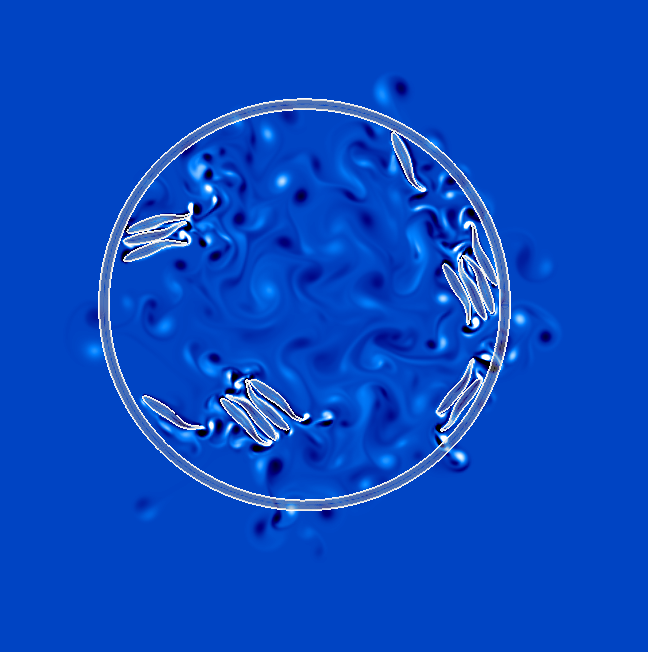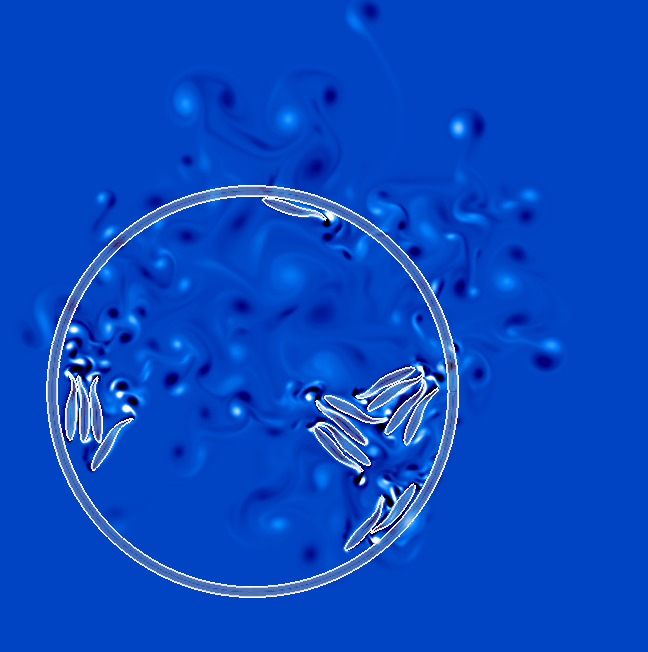Section: New Results
Modeling and numerical simulation of ellipsoidal particle-laden flows and self propelled swimmers in a porous enclosure
Despite being relevant in many natural and industrial processes, suspensions of non-spherical particles have been largely under-investigated compared to the extensive analyses made on the gravity-driven motions of spherical particles. One of the main reasons for this disparity is the difficulty of accurately correcting the short-range hydrodynamic forces and torques acting on complex particles. These effects, also known as lubrication, are essential to the suspension of the particles and are usually poorly captured by direct numerical simulation of particle-laden flows. We have proposed a partitioned VP-DEM (Volume Penalization method - Discrete Element Method) solver which estimates the unresolved hydrodynamic forces and torques. Corrections are made locally on the surface of the interacting particles without any assumption on the particle global geometry. This is an extension of our previous work [39]. Numerical validations have been made using ellipsoidal particles immersed in an incompressible Navier-Stokes flow.
Self organization of groups of several swimmers is of interest in biological applications. One of the main question is to determine if the possible organization comes from an uncontrolled or a controlled swimming behavior. This work has been motivated by the recent studies of Hamid Kellay (LOMA). Hamid Kellay has presented his results during a small workshop we organized earlier this year between members of the Memphis team (modeling and numerical methods), the MRGM (experimental zebra-fishes swimming), the LOMA (interaction between self-propelled particles) and the ONERA (flapping wings).
The collision model developed in the previous section has been developed for concave interactions like sphere-sphere or in the limit of sphere-plane wall. For non concave interactions, we have derived a simple approximation considering locally convexity as being a plane wall. We have performed numerical simulations of the interaction of several self propelled swimmers in a porous enclosure (see figure 17). Fishes are organized in small groups that are able to put into motion the enclosure. This behavior is similar to the one observed in the experimental set-up of Hamid Kellay.






